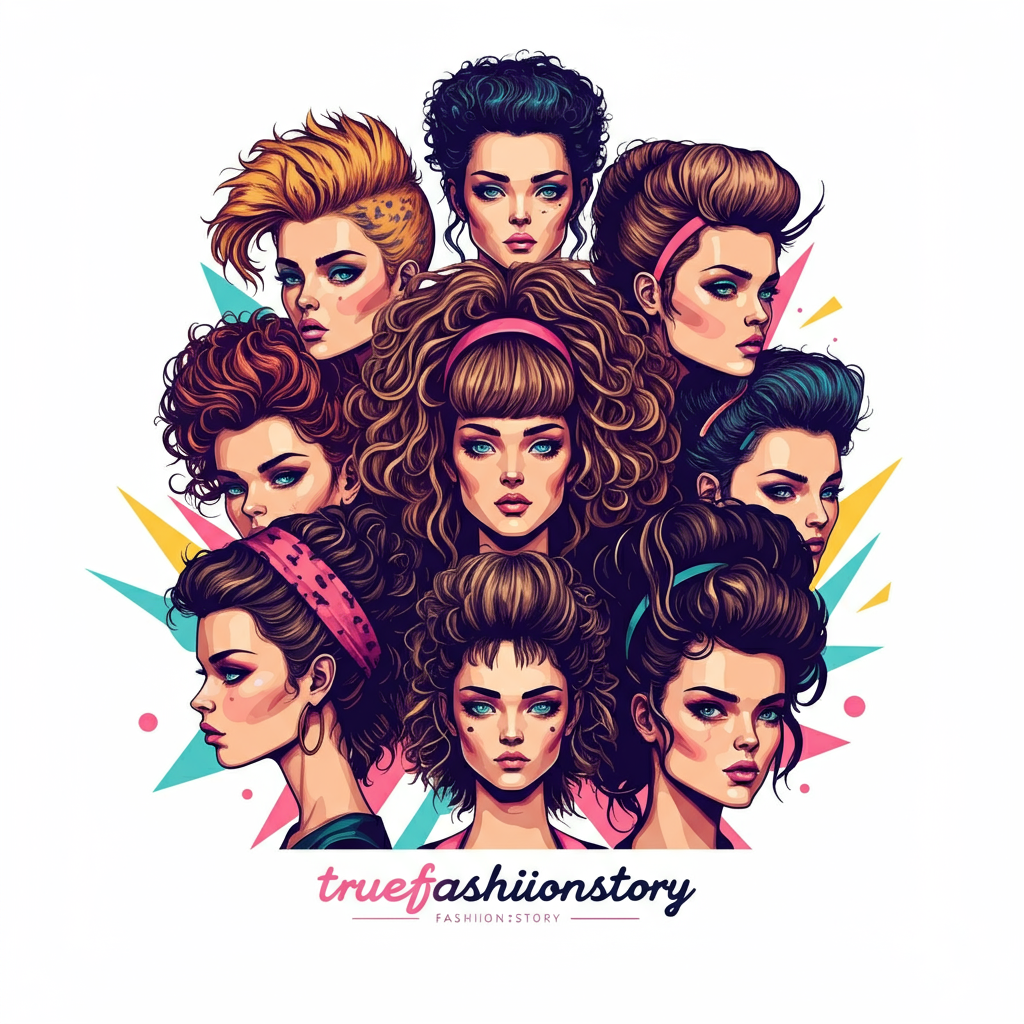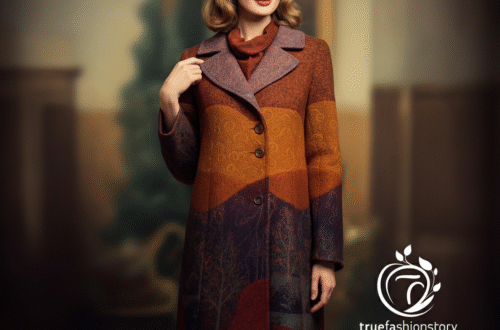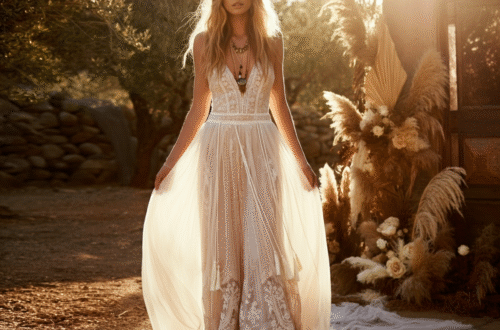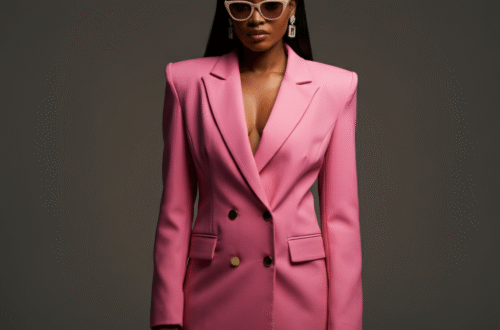Welcome to the wild and wonderful world of eighties hair fashion! The 1980s was a decade of bold choices, and nowhere was this more obvious than in the hairstyles. It was a time of excess, where bigger was always better, and hair was a primary form of self-expression. From gravity-defying perms to razor-sharp asymmetrical cuts, the styles of this era were anything but boring.
In this guide, we will take a nostalgic trip back to explore the most iconic looks that defined a generation. We will break down the styles, the products that made them possible, and the cultural impact they had. Get ready to tease, spray, and celebrate the unforgettable trends of eighties hair fashion.
Key Takeaways
- Bigger is Better: The dominant theme in 80s hair was volume. Perms, teasing, and powerful hairsprays were essential tools.
- Variety and Expression: The decade saw a huge range of styles, from the punk-inspired Mohawk to the professional power bob, allowing for immense personal expression.
- Unisex Styles: Many popular looks, like the mullet and shag, were worn by both men and women, blurring traditional gender lines in hairstyling.
- Pop Culture Influence: Music icons like Madonna, David Bowie, and the members of glam metal bands were major trendsetters, with their hair becoming as famous as their music.
The Philosophy Behind 80s Hair: More is More
The 1980s was a decade of economic boom, vibrant pop culture, and a general feeling of optimism and extravagance. This “more is more” attitude was perfectly reflected in eighties hair fashion. Hair wasn’t just hair; it was a statement. It was about being seen, being bold, and not being afraid to take up space. Volume was the goal, and people used every tool at their disposal to achieve it.
This era moved away from the softer, more natural styles of the 1970s. Instead, it embraced artificiality and structure. Hairspray became a non-negotiable part of the daily routine, creating stiff, sculpted styles that could withstand anything. The goal was to look like you put in the effort, and the result was a decade of memorable, larger-than-life hair.
The Perm: An 80s Rite of Passage
If one hairstyle could define the entire decade, it would be the perm. The permanent wave gave people the tight curls and massive volume that were the foundation of so many iconic 80s looks. It wasn’t just for women; men also embraced the perm to get the curly manes seen on rock stars and movie heroes.
What Was a Perm?
A perm involved a chemical process that broke down and then reformed the protein bonds in hair, locking it into a new, curly shape. A stylist would wrap sections of hair around plastic rods and apply a perming solution. After a set time, a neutralizer was used to lock the curls in place. The result could last for months, providing a permanent base for voluminous styles.
The Spiral Perm and Root Perm
Within the world of perms, there were variations. The spiral perm used long, corkscrew-shaped rods to create tight, bouncy ringlets, a look made famous by stars like Whitney Houston. For those who just wanted lift at the crown, the root perm was the answer. It added volume right at the scalp, helping to build the towering heights that were so popular in eighties hair fashion.
The Mighty Mullet: Business in the Front, Party in the Back
Few hairstyles are as instantly recognizable—and as debated—as the mullet. This iconic cut was short on the top and sides and long in the back. It was the ultimate versatile style, seen on rock stars like David Bowie and Billy Ray Cyrus, hockey players, and everyday people across the country.
The mullet was a true unisex style, worn with flair by both men and women. Cher and Joan Jett, for example, rocked incredible mullets that combined edgy, choppy layers on top with long, flowing locks in the back. The mullet perfectly captured the era’s playful and rebellious spirit, and its influence can still be seen in modern interpretations of the cut. To dive deeper into how trends evolve, you can find more articles on truefashionstory.com.
Asymmetrical Cuts and Undercuts
For those who wanted to push the boundaries, asymmetrical styles were the way to go. These edgy cuts involved having hair significantly longer on one side than the other. Often, one side would be buzzed very short or even feature an undercut, where the hair underneath is shaved, leaving a longer layer on top.
This look was heavily influenced by the new wave and punk music scenes. Artists like Cyndi Lauper and the members of A Flock of Seagulls made these daring cuts mainstream. The sharp angles and dramatic contrast of an asymmetrical cut were a bold statement of individuality, perfectly aligning with the expressive nature of eighties hair fashion.
Big Hair, Don’t Care: The Art of Teasing and Hairspray
How did 80s hair get so big? The secret lay in two key techniques: teasing and hairspray.
- Teasing (or Backcombing): This involved taking a section of hair, holding it straight up, and using a fine-tooth comb to push the hair down toward the scalp. This created a tangled “cushion” of hair at the roots, which provided instant volume and lift. The smooth top layer of hair would then be gently combed over the teased section.
- Hairspray: The final and most crucial step was a generous coating of extra-strong hold hairspray. Brands like Aqua Net were famous for creating a helmet-like hold that could keep teased hair in place all day and night. The aerosol can was a staple on every bathroom counter.
These techniques were used to create sky-high bangs, voluminous crowns, and the overall massive silhouettes that defined the decade.
Glam Metal Hair: The Feathered and Fierce Look
The 1980s was the golden age of glam metal, and bands like Bon Jovi, Mötley Crüe, and Poison weren’t just famous for their power ballads. They were legendary for their hair. This style, often called “hair band hair,” was a mix of long, heavily layered cuts, teasing, and, of course, lots of hairspray.
The look was distinctly androgynous. It often involved perms to add texture and curl, with long, feathered layers framing the face. It was big, wild, and unapologetically over-the-top. Fans eagerly copied the styles of their favorite rockers, making this one of the most widespread and memorable trends in men’s eighties hair fashion.
The Power Bob and the Wedge
While many 80s styles were about wildness, there were also chic and sophisticated options. The power bob was a sharp, often chin-length bob with clean lines and blunt edges. It was a symbol of the new professional woman entering the workforce, projecting confidence and authority.
A popular variation was the wedge cut, famously created by stylist Trevor Sorbie. This cut was short in the back, gradually getting longer toward the front, with stacked layers creating a “wedge” shape at the nape of the neck. It had volume and structure but in a more polished and controlled way than a perm or mullet.
Accessories: More Than Just Hair
No 80s hairstyle was complete without the right accessories. These weren’t just functional; they were a key part of the fashion statement.
- Scrunchies: These fabric-covered elastic bands were everywhere. They were used to secure high side ponytails and were often worn on the wrist as a bracelet.
- Headbands: From wide, stretchy cotton bands worn during workouts (thanks, Jane Fonda!) to thin plastic ones used to hold back teased bangs, headbands were a versatile accessory.
- Banana Clips: This long, curved clip could gather hair into a cascading ponytail or an elegant updo, creating a fan of hair down the back.
- Big Bows: Often made of lace or satin, huge bows were clipped on top of the head or at the base of a ponytail, a look made iconic by Madonna.
Comparing Key 80s Hairstyles
|
Hairstyle |
Key Features |
Worn By |
Vibe |
|---|---|---|---|
|
The Perm |
Tight, chemical curls; lots of volume |
Everyone, Whitney Houston |
Bouncy, Voluminous |
|
The Mullet |
Short on top, long in the back |
David Bowie, Billy Ray Cyrus, Cher |
Rebellious, Fun |
|
Feathered Hair |
Layered, textured, often long |
Bon Jovi, Farrah Fawcett (late 70s-early 80s) |
Rocker, Glamorous |
|
Asymmetrical Cut |
One side longer than the other; undercuts |
Cyndi Lauper, A Flock of Seagulls |
Edgy, New Wave |
|
Power Bob |
Sharp, chin-length, blunt |
Working women, Princess Diana |
Professional, Chic |
Conclusion: The Lasting Legacy of 80s Hair
The trends of eighties hair fashion were bold, creative, and unapologetically fun. While some of the more extreme looks, like the sky-high permed bangs, have stayed in the past, the influence of the decade is far from over. Modern styles often borrow elements from the 80s, such as the renewed popularity of shags, mullets (now called “wolf cuts”), and the enduring love for voluminous, textured hair.
The 80s taught us that hair is a powerful tool for self-expression. It’s a way to show the world who you are, whether you’re a punk rocker, a pop princess, or a powerful professional. The spirit of the decade—its courage, its creativity, and its willingness to go big—continues to inspire stylists and fashion lovers today. For more on how fashion history shapes today’s trends, explore the resources at truefashionstory.com.
Frequently Asked Questions (FAQ)
Q1: What was the most popular hairstyle in the 80s?
While there were many popular styles, the perm was arguably the most widespread. It created the curly texture and volume that formed the base for many other iconic looks of the decade for both men and women.
Q2: What products were essential for eighties hair fashion?
Super-strong hold hairspray (like Aqua Net), mousse for volume, and gel for sculpting were absolute must-haves. A fine-tooth comb for teasing and a blow dryer with a diffuser attachment were also essential tools.
Q3: How do I get an 80s look without getting a perm?
You can mimic the 80s volume without the chemical commitment. Use hot rollers or a small-barrel curling iron to create tight curls. Apply mousse to damp hair before blow-drying upside down for root lift, and don’t be shy with the teasing comb and texturizing spray.
Q4: Are 80s hairstyles coming back?
Yes, many elements of eighties hair fashion are making a comeback. Modern versions of the mullet and shag are very popular, as are curly bangs and voluminous, blown-out styles. The new looks are typically softer and require less hairspray than their 80s counterparts.





